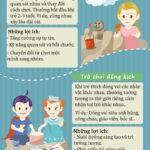Exploring the world around them and delving deeper into subjects that pique their interest are common traits among students. Thus, mastering effective learning methods and understanding how to utilize one’s brain remain essential for academic success.
From a young age, parents can help their children protect and develop three crucial parts of the brain, fostering intellectual growth, enhanced cognitive abilities, creativity, and a smoother learning process.


Corpus Callosum
As we know, the brain is divided into the left and right hemispheres. The left hemisphere is responsible for logic, while the right hemisphere governs creativity and overall control. The corpus callosum acts as the bridge for communication between these two halves, constantly transmitting information between them.
Take reading as an example. During reading, the left brain identifies words, comprehends sentence meanings, analyzes logical relationships within the text, and memorizes specific knowledge points. Simultaneously, the right brain imagines scenes from the story, senses emotions conveyed in the text, and associates them with personal experiences.

The corpus callosum serves as the bridge for communication between the two hemispheres, facilitating the constant exchange of information.
For instance, when a child reads the phrase “willow branches sprout in spring,” the left brain needs to confirm the pronunciation of each word for the child to understand that it refers to plant growth. At this moment, the right brain immediately follows, automatically picturing tender willow branches and even associating it with last year’s spring outing, allowing the child to feel the essence of spring.
Therefore, parents should encourage their children to read extensively and engage in activities that utilize both hands, such as drawing with the left hand and writing with the right, playing musical instruments, and assembling puzzles. These activities effectively develop both brain hemispheres and promote the growth of the corpus callosum.

Frontal Lobe
This is the brain’s commander-in-chief, primarily responsible for managing concentration, self-control, and planning abilities. A child’s ability to focus in class, resist sugary treats, and take the initiative to study depends on the development of this area.
The frontal lobe develops relatively slowly, typically reaching its peak in preteens around the age of 12, and only matures fully by the age of 20. So, parents should not expect their children to have the same self-discipline as adults. However, through training, children can gradually improve in this regard.
Firstly, it is essential to protect the frontal lobe. For instance, children should wear helmets when riding bicycles and avoid any impact to this area, even when they are emotionally frustrated.

Help your child accumulate small successes and a sense of accomplishment.
Secondly, break down large tasks into smaller, manageable ones. For example, ask your child to help you wash the dishes. If they do a good job, offer praise and encouragement, and gradually increase the number of dishes they wash until they can easily handle the task for the entire family. When practicing the piano, start with five notes with one hand, then add five more when they’ve mastered that, and eventually introduce both hands, gradually increasing the difficulty level like climbing stairs.
What about children who dislike math? On the first day, start with the two easiest questions to build their confidence. On the second day, include two basic questions and one of medium difficulty, slightly increasing the challenge. On the third day, try one difficult question and encourage them to seek out similar examples to push beyond their comfort zone.
Note: Parents should not do everything for their children, but rather provide support and help them accumulate small successes and a sense of accomplishment.

Hippocampus
The hippocampus has two main functions. Firstly, it helps the brain temporarily store information (if information were a package, the hippocampus would be the distribution center for storing these packages). Secondly, it labels information, filters out irrelevant data, retains essential details, and converts them into long-term memory.
If a child remembers something today but forgets it tomorrow, it is likely that their hippocampus is not functioning optimally. So, how can we train the hippocampus?

Image source: Pinterest.
Increase Physical Activity
During exercise, a protein called BDNF is released, promoting the production of neurons in the hippocampus. Engaging in about 30 minutes of light rhythmic exercise daily can benefit the hippocampus. Running, walking, gymnastics, skipping rope, and ball games are all excellent choices.
Reduce Stress
The hippocampus is the part of the brain most susceptible to stress. To achieve this goal, ensure your child gets enough sleep, engages in healthy play, spends time in nature, and soaks in morning sunlight to boost serotonin levels and alleviate stress.
Focus on the Pre-Bedtime Window
The 15 minutes before falling asleep is the golden period for memory consolidation. During this time, the hippocampus prioritizes and organizes incoming information. Therefore, ensuring your child is relaxed and calm before sleep can improve their memory retention.

The 15 minutes before falling asleep is the golden period for memory consolidation.
Reduce Sugar and Increase Fish Intake
DHA is an essential component of the hippocampus. Include DHA-rich fish or foods with high alpha-linolenic acid content, such as perilla oil, flaxseed oil, rapeseed oil, and walnuts, in your child’s diet.
In conclusion, the corpus callosum, frontal lobe, and hippocampus are the “core brain areas” responsible for learning. By nurturing and developing these areas effectively, children can experience easier learning, and parents can rest assured.
“Infographic: 9 Fun and Educational Holiday Activities for Kids”
Parents, are you looking for ways to engage and connect with your children during the weekends or holidays? It’s important to choose the right activities and games that are not only fun but also educational and age-appropriate. As a savvy parent, you understand the significance of quality family time and the impact it can have on your child’s development. By selecting the perfect games, you can create memorable moments and foster a loving and nurturing environment for your little ones.






































